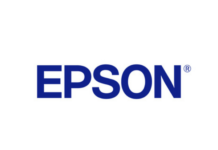The report “Digital Signage Market Size, Share & Growth” by Market and Markets details that the the digital signage market in the US is projected to grow from USD 5.66 billion in 2024 to USD 7.15 billion by 2029, registering a CAGR of 4.8% during the forecast period.
Continue reading the excerpt from the report below to learn more
The US digital signage market experiences growth due to multiple key factors such as retail industry adoption and digital out-of-home (DOOH) advertising development coupled with display technology advances. Moreover, AI and cloud solutions adoption, smart city expansion, rising demand for interactive kiosks, regulatory push for energy-efficient solutions and increasing demand for digital displays from the corporate sector are some of the key drivers fueling market growth in the country. Furthermore, increased demand for real-time content updates, data-driven advertising and rising investments in digital transformation across various industries are further driving the market growth.
The commercial segment is expected to dominate the application segment in the US digital signage market since businesses extensively implement advanced display solutions throughout retail outlets as well as hospitality venues, corporate spaces and transportation systems. Businesses make strategic use of digital signage systems as tools for engaging customers while promoting their brands and broadcasting real-time messages and interactive advertisements. Retail dominates the commercial segment in the US due to heightened business needs for dynamic, personalized in-store advertising as well as interactive kiosks and digital displays, which create enhanced customer experiences. The combination of AI analysis and cloud content management tools helps retailers develop specific marketing offers and improve shopping flow and sales results.
By offering, the software segment is likely to record the highest growth rate in the US digital signage during the forecast period.
The software segment is likely to witness the fastest growth in the US digital signage market since more organizations are adopting cloud-based content management systems and AI-based analytics integrated with real-time data streams. For instance, retailers, healthcare facilities, indoor ad agencies, and transportation operators implement advanced applications in digital signage that manage distribution in real time while allowing personalized and dynamic advertising to be streamed to engage audiences. Moreover, the demand for interactive and programmatic digital signage further drives software adoption with capabilities such as automated content scheduling and optimized advertisement placements.
Rising adoption of energy-efficient digital displays across various verticals in the US to drive market growth.
Businesses operating in the US digital signage market are increasingly focusing on energy-efficient digital displays because they combine both sustainability goals and cost reduction. The development of LED, OLED, microLED and ePaper technologies has enabled displays to become more efficient in power consumption while extending operational lifespan and enhancing light output efficiency. ePaper displays specifically have become popular because they need power only during updates and therefore work well in public information boards, retail shelf labels, and transportation signage. For instance, in November 2024, Ynvisible Interactive (Canada) collaborated with Waypoint Transit Solutions (US) to produce budget-friendly e-paper display signage systems for bus stations across the US. Through their partnership Ynvisible delivers real-time transit updates by using its low-power reflective e-paper displays. The drive towards eco-friendly energy solutions together with regulatory initiatives is fueling widespread adoption of low-power digital signage among retail operations and transportation sectors as well as corporate spaces.
Digital Signage Market Dynamics
- Driver: Rising demand for advanced display solutions such as 4K and 8K displays
- Restraint: High initial costs
- Opportunity: Increasing adoption in industrial sector
- Challenge: Security concerns related to digital signage











